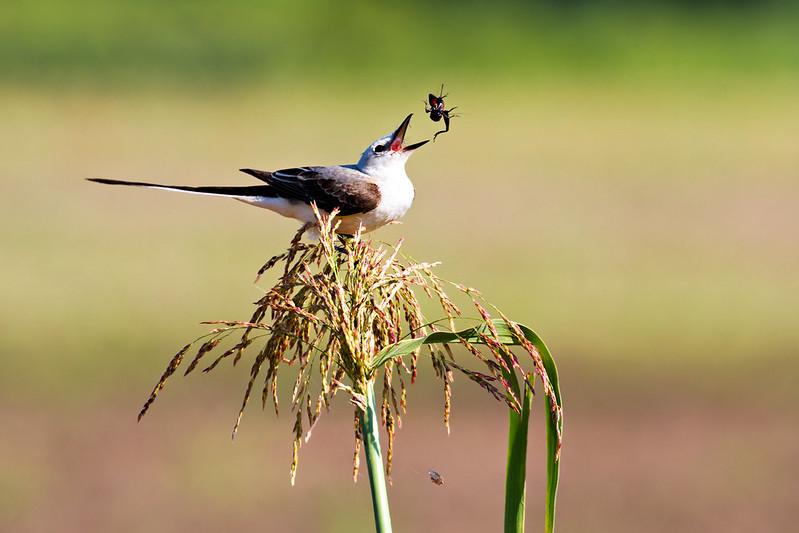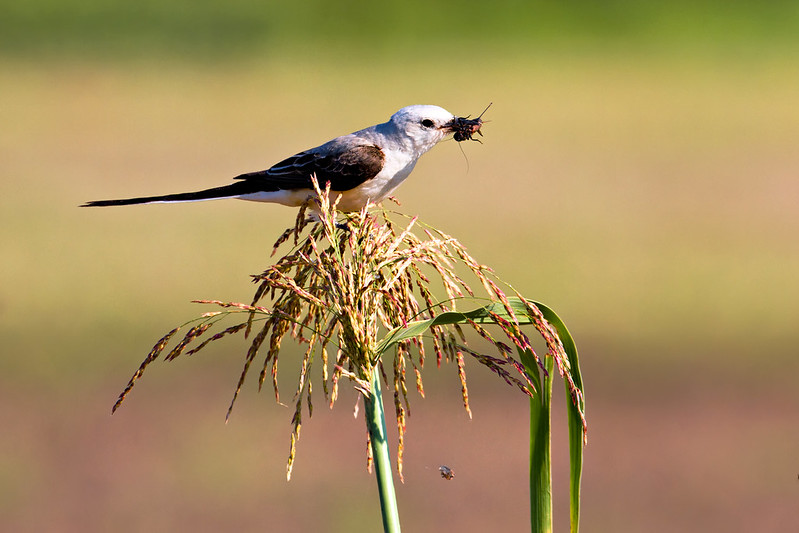On a warm July morning in Oklahoma, I captured a remarkable moment: a Scissor-tailed Flycatcher tossing a cricket into the air before catching it mid-flight. Taken at Sequoyah National Wildlife Refuge in July of 2014, this image shows the bird’s keen hunting precision and agility.


Graceful and Acrobatic in the Hunt
The Scissor-tailed Flycatcher (Tyrannus forficatus) is a striking bird with long, forked tail feathers that flutter dramatically in flight. Native to the south-central United States, it thrives in open fields and grasslands. Its diet during the summer consists largely of insects, especially crickets, grasshoppers, and beetles.
In the wild, these flycatchers use perches like fence posts or tall grasses to scout for prey. Once they spot a target, they swoop down or leap into the air with incredible grace, often flipping their catch before swallowing it whole.
Insect Control With Style
In addition to being visually captivating, Scissor-tailed Flycatchers play a helpful ecological role. By consuming large numbers of crop-damaging insects, they provide natural pest control for local ecosystems and farmland.
For example, the cricket shown in this photo is a common agricultural pest. Birds like the flycatcher help manage these populations naturally, reducing the need for pesticides.
Where to Spot Them
Sequoyah National Wildlife Refuge, where this image was taken, is one of many habitats where these birds thrive. During breeding season, they can be seen across Oklahoma, Texas, and other nearby states. They migrate to Central America during the winter.
Birdwatchers hoping to see a Scissor-tailed Flycatcher in action should look for open habitats with scattered trees, especially in the morning or late afternoon when they’re most active.
Final Takeaway
Watching a Scissor-tailed Flycatcher catch prey is a reminder of the beauty and balance of nature. This bird combines elegance with function, making it a favorite among birders and photographers alike.
For a different 2023 observation of this bird species, check out my post: A Scissor-tailed Flycatcher and Its Cricket Feast.
